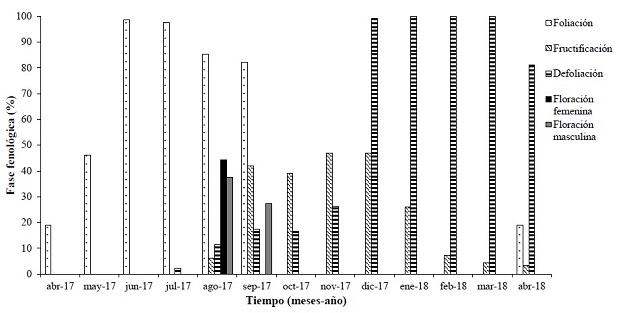Estructura poblacional y fenología de cuachalalate (Amphipterygium adstringens) desarrollado sobre litosol degradado en la costa de Oaxaca
DOI:
https://doi.org/10.28940/terra.v41i0.1595Palabras clave:
categorías de crecimiento, distribución agregada, fenograma, hidrofobia, transición edáficaResumen
Amphypterigium adstringens “cuachalalate” crece en los suelos degradados de la selva baja de la costa de Oaxaca. Dos objetivos fueron llevados a cabo: 1. En cuachalalate: obtener la estructura poblacional vertical y horizontal, identificar el patrón de dispersión de los individuos y observar el periodo de las fases fenológicas. 2. En el suelo: determinar las características físicas y químicas del litosol degradado de San Pedro Mixtepec, Oaxaca, donde crece el cuachalalate. En sitios de 1000 m2 fueron registrados todos los individuos de cuachalalate. Éstos fueron clasificados por etapas de crecimiento (brinzal, latizal, fustal). Para analizar la jerarquía de tamaños de las poblaciones de cuachalalate se analizó la estructura horizontal y vertical. La dispersión espacial de las poblaciones fue estimada con el índice de Morisita. En los fustales se registraron los eventos fenológicos: foliación, floración femenina y masculina, fructificación y defoliación, durante un año (época lluviosa de 2017 a época seca de 2018). La estructura vertical de las poblaciones de cuachalalate presentó dos estratos: inferior (2.0 a 9.5 m) y superior (10.0 a 16.0 m); la estructura horizontal mostró que brinzales y latizales tienen diámetros < 2.5 cm y fustales de 5 a 10 cm. La distribución espacial de las poblaciones es agregada. La floración ocurrió durante la época lluviosa, la fructificación durante la época lluviosa a la seca del siguiente año, la foliación de la época seca a la lluviosa del mismo año, la defoliación de la época lluviosa a la seca del siguiente año. Los litosol degradados tienden a ser erosionados por escurrimiento, son impermeables e hidrófobos. Los suelos de piedemonte poseen características físicas y químicas que destacan procesos incipientes de acumulación, lo que anticipa transición hacia regosol éutrico, suelo favorable para la persistencia de la selva baja caducifolia.
Descargas
Publication Facts
Reviewer profiles N/D
Author statements
- Academic society
- Terra Latinoamericana

















